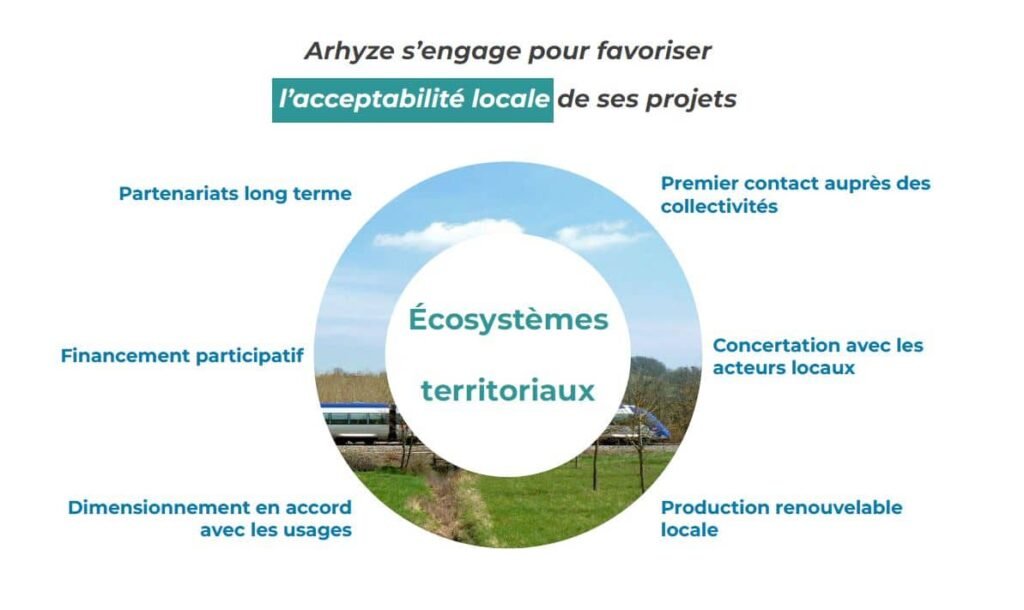Hydrogen+. Arhyze develops, finances, builds and operates green hydrogen projects. What technologies do you use for the production of this hydrogen?
Mathieu Coustets. We are developing projects for the production of renewable hydrogen from water electrolysis, whether with alkaline or PEM, which are the two mature technologies in electrolysis. This allows us to quickly deploy projects of up to 10 MW. Alkaline and PEM are also the most economically competitive, which allows installations to be scaled more widely. This is in fact the best technology for producing green hydrogen using renewable electricity that we purchase from renewable energy producers. This guarantees the traceability of the hydrogen.
We are also interested in other technologies such as high temperature electrolysis which allows higher yields, but which is less mature and therefore does not offer economic balance to date. On the other hand, this technology will be able to respond to the many challenges we face in a few years.
Is the renewable energy necessary for the production of green hydrogen produced locally?
The energy we use is produced locally wherever possible. We seek the best supply plan from local producers in order to obtain the best economic balance. We place our electrolysers as close as possible to users in order to avoid transport, which is expensive. We have three sources of supply. Being mainly present in urban environments and in business areas, we try to connect a renewable source directly to our electrolyser by using photovoltaic production plants, particularly on the ground, on a large roof or in the form of shade houses. But this is often insufficient. Our second source of supply comes from so-called over-the-counter contracts (Corporate PPA), that is to say that we connect to the electricity network and that we buy electricity from renewable energy producers via market players. This allows us to combine different types of energy (wind, photovoltaic, hydraulic) allowing a more stable supply for our electrolysers. This also prevents us from oversizing certain equipment that is currently very expensive. Finally, we participate in the service on the network by favoring the erasure of our installations. Hydrogen therefore allows us to decarbonize industry and the uses of mobility, and shedding allows us to avoid the use of carbon sources such as gas and coal.
In which territories are you present and with which actors – economic, political – do you collaborate?
We are developing projects throughout France, particularly in the Great West, the South West and the North. These territories in fact offer greater development opportunities for our type of business, because they favor the emergence of local ecosystems that are less centralized than in other regions. We collaborate with community services, elected officials, regional services (development agencies) or directly with regions interested in our independent and agile company profile.
We are also in the fundraising phase. This will allow us to accelerate our development, hire around ten people over a year, structure our existing and future projects (including the production of green ammonia), and develop other technological building blocks.
You are very involved in the so-called “project acceptability” process. Concretely, how does this happen in the territories and communities?
We talk a lot with regions, services and communities who want to get involved in hydrogen or who want to find out about the projects we are developing in their territory. We come from the renewable energy sector, particularly wind power. We therefore understand the importance of the acceptability of projects for communities and their inhabitants. We therefore advocate consultation with local stakeholders, public or private, and the development of local jobs by dealing with local companies, for maintenance for example.
This acceptability translates into educational work with communities, but also with stakeholders who wish to better understand the challenges of the sector. This support allows us to target potential uses and create a coherent ecosystem as close as possible to the needs of the territory. Thus, for the years to come, we are not seeking to increase the number of infrastructures at all costs, but rather to increase the power of electrolyzers.
This acceptability also involves the local population. This is why we set up crowdfunding for our projects.
On the other hand, we develop projects to operate them over the long term (15 to 20 years). We are therefore attentive to the details that will be important during operation. For example, we anticipate future regulations as much as possible, particularly on ICPEs (installations classified for environmental protection).
All these points are assets which are very appreciated at the local level. Our projects are transparent and we seek to involve all local stakeholders.

